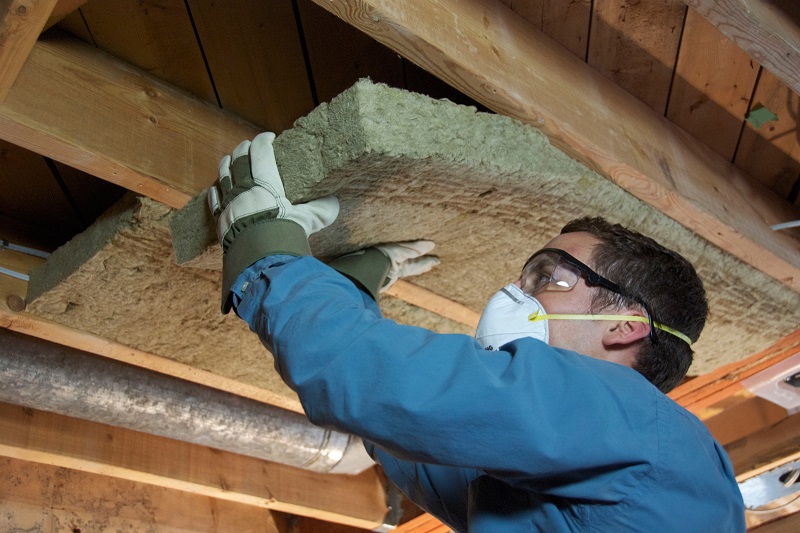Fabric first will safeguard heat decarbonisation
[edit] Introduction
On 18 October 2021, we saw the publication of the UK Government’s Heat and Buildings Strategy; a milestone document that will shape the country’s road map to decarbonise heating in buildings. Long awaited, it came shortly before the start of the COP26 summit and without revealing any surprises, but it does seem inadequate in the face of addressing the huge task of reducing carbon emissions from buildings.
BSRIA welcomes the Government’s increased focus and support for low-carbon heating technologies and plans for curbing sales of fossil fuel boilers. However, the Heat and Buildings Strategy fails to tackle energy efficiency improvements in buildings on a wide enough scale.
The strategy concedes that the journey to net zero buildings starts with better energy performance and recognises that energy efficiency should be improved by adopting a 'fabric first’ approach, which prioritises measures to upgrade building fabric before making changes to the heating systems. However, the strategy stops short of providing support for measures to upgrade buildings’ fabric to the whole market.
The Boiler Upgrade Scheme aims to incentivise early adopters of heat pumps, most likely to be recruited among owner-occupiers of homes. The scheme supports the purchase of some 90,000 heat pumps over three years. However, it does not consider measures that are essentially necessary to improve existing buildings so that they are ready for new installation. The Home Upgrade Grant and Social Housing Decarbonisation Fund address the need of low-income households experiencing fuel poverty. However, owner-occupiers are promised a green finance market, which might mean that mortgage lenders require disclosure of the energy performance of the homes prior to agreed lending, putting most of the onus for energy efficiency improvements on homeowners themselves.
[edit] Fabric first and the holistic approach
For the successful mass deployment of low carbon heating, it is important to understand that buildings need to ‘get ready for low carbon technologies’ by focusing on fabric performance through implementing energy efficiency measures. Steps towards getting low carbon heating ready will require a range of measures, including insulation and heating system controls, while looking at what is affordable and how this can address rising energy costs.
The fabric first approach promotes a holistic view where low carbon technologies and buildings are considered as one interlinked system. It allows for better consumer buy-in (spreading investment, allowing time for understanding and attitude changes in the minds of end users) and helps avoid a potential product performance gap (efficiency/high operating cost issues).
It will ensure the successful roll-out of low carbon heating systems not only when they are incentivised but, more importantly, in a way that will endure into the future.
This article originally appeared on the BSRIA website. It was written by Krystyna Dawson, Commercial Director and published in October 2021.
--BSRIA
[edit] Related articles on Designing Buildings
- Applying Fabric First principles: Complying with UK energy efficiency requirements FB 80.
- Boiler.
- Boiler markets and the green recovery.
- BSRIA articles on Designing Buildings Wiki.
- Decarbonisation solutions.
- ECA backs Government plans for low-carbon heat.
- Fabric first.
- Fabric first investigation into net zero for existing buildings.
- Net zero strategy: build back greener.
- Zero carbon homes.
- Zero carbon non-domestic buildings.
Featured articles and news
The UK's Modern Industrial Strategy: A 10 year plan
Previous consultation criticism, current key elements and general support with some persisting reservations.
Building Safety Regulator reforms
New roles, new staff and a new fast track service pave the way for a single construction regulator.
Architectural Technologist CPDs and Communications
CIAT CPD… and how you can do it!
Cooling centres and cool spaces
Managing extreme heat in cities by directing the public to places for heat stress relief and water sources.
Winter gardens: A brief history and warm variations
Extending the season with glass in different forms and terms.
Restoring Great Yarmouth's Winter Gardens
Transforming one of the least sustainable constructions imaginable.
Construction Skills Mission Board launch sector drive
Newly formed government and industry collaboration set strategy for recruiting an additional 100,000 construction workers a year.
New Architects Code comes into effect in September 2025
ARB Architects Code of Conduct and Practice available with ongoing consultation regarding guidance.
Welsh Skills Body (Medr) launches ambitious plan
The new skills body brings together funding and regulation of tertiary education and research for the devolved nation.
Paul Gandy FCIOB announced as next CIOB President
Former Tilbury Douglas CEO takes helm.
UK Infrastructure: A 10 Year Strategy. In brief with reactions
With the National Infrastructure and Service Transformation Authority (NISTA).
Ebenezer Howard: inventor of the garden city. Book review.
The Grenfell Tower fire, eight years on
A time to pause and reflect as Dubai tower block fire reported just before anniversary.
Airtightness Topic Guide BSRIA TG 27/2025
Explaining the basics of airtightness, what it is, why it's important, when it's required and how it's carried out.
Construction contract awards hit lowest point of 2025
Plummeting for second consecutive month, intensifying concerns for housing and infrastructure goals.
Understanding Mental Health in the Built Environment 2025
Examining the state of mental health in construction, shedding light on levels of stress, anxiety and depression.
The benefits of engaging with insulation manufacturers
When considering ground floor constructions.
Lighting Industry endorses Blueprint for Electrification
The Lighting Industry Association fully supports the ECA Blueprint as a timely, urgent call to action.

























